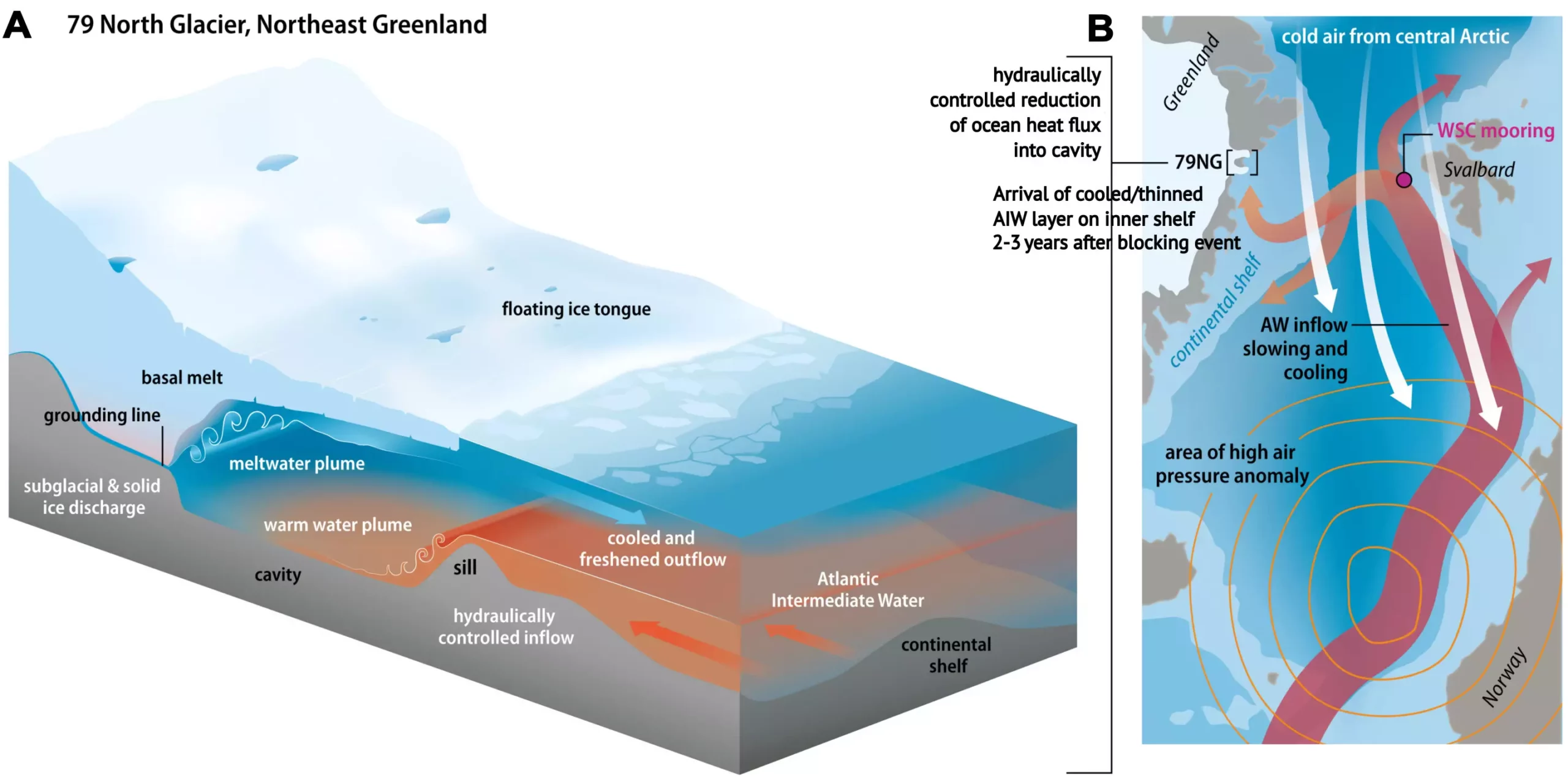The 79° N Glacier, located in Northeast Greenland, is not only recognized as the largest floating glacier tongue of the country but also represents a concerning signal of the environmental effects of climate change. As global temperatures continue to rise, this glacier faces unprecedented challenges, particularly from melting driven by warmer Atlantic waters beneath its surface. Recent research has brought forth surprising findings regarding the cooling trends of these waters, raising crucial questions about what this could mean for the future of not just the glacier, but also the global climate.
Researchers from the Alfred Wegener Institute have reported a notable decrease in ocean water temperatures entering the glacier’s cavern during the period from 2018 to 2021. This decline stands in stark contrast to the general warming observed in the surrounding ocean, sparking curiosity about the varying influences at play. The phenomenon was attributed to changes in atmospheric circulation patterns, specifically atmospheric blocking, which resulted in cold Arctic air flowing through the Fram Strait and Norwegian Sea.
These changes in atmospheric conditions effectively diverted warmer Atlantic waters, allowing them to cool more significantly as they traveled toward the glacier. Understanding this interplay between atmospheric dynamics and ocean temperatures is crucial because it can influence not only the 79° N Glacier’s melting rate but also the health of surrounding ecosystems and the overall stability of the Greenland Ice Sheet.
The implications of these research findings extend beyond academic curiosity; they also raise alarm bells regarding potential future sea-level rise. The Northeast Greenland Ice Stream, which feeds into the 79° N Glacier, holds significant mass that, if completely melted, could contribute up to one meter to sea-level rise. The shrinking of the Greenland Ice Sheet has profound implications for coastal communities worldwide, which are already grappling with the effects of climate change.
The correlation between warmer oceanic conditions and increased ice melt underscores the vicious cycle presented by climate change: as glaciers melt, they contribute to rising sea levels, which in turn exacerbates the risks posed by storm surges and flooding in coastal areas. Thus, understanding and predicting the patterns of glacier behavior are vital for global economic and ecological stability.
The AWI researchers utilized a comprehensive dataset collected from 2016 to 2021, employing oceanographic moorings to monitor real-time changes in temperature and flow speed of the seawater feeding into the glacier. This kind of data is paramount, as it allows scientists to create more accurate models that predict how changing conditions might influence glacier melting in the coming years.
Research findings revealed that the temperature of Atlantic water decreased significantly, emphasizing the importance of continuous monitoring of oceanic and atmospheric conditions. The data suggest that changes in the temperature profiles can directly affect the rate of ice melt, thus highlighting the intricate relationships within our climate system.
The discovery of temporary cooling in the context of an overall warming trend presents a complex picture for climate scientists. These findings hint at the potential for variability in climate responses that might not be immediately apparent. Dr. Rebecca McPherson, the lead author of the study, emphasized that understanding these underlying processes is crucial for refining future sea-level rise forecasts.
As the researchers prepare for further studies set for 2025 aboard the research icebreaker Polarstern, it is critical to monitor how fluctuations in ocean temperatures might continue to affect the glacier’s melting trends. The continuous flow of warm water into the glacier cavern is an important component of the Atlantic Meridional Overturning Circulation (AMOC). Should this circulation weaken, as some forecasts predict, the repercussions could be significant, not just for North Greenland but for global climate patterns.
Research on the 79° N Glacier encapsulates the urgent need for increased awareness and responsiveness to the effects of climate change. Understanding how atmospheric patterns affect ocean conditions is vital to both predicting the fate of glaciers and ultimately managing the global implications of their melting.
As continents grapple with the environmental consequences of rising sea levels, the outcomes of this research could help shape policies addressing climate change. Experts advocate for continued monitoring and proactive engagement as essential steps toward safeguarding our planet. The fate of the 79° N Glacier serves as both a warning and a call to action for a world desperately in need of solutions to mitigate the climate crisis.

